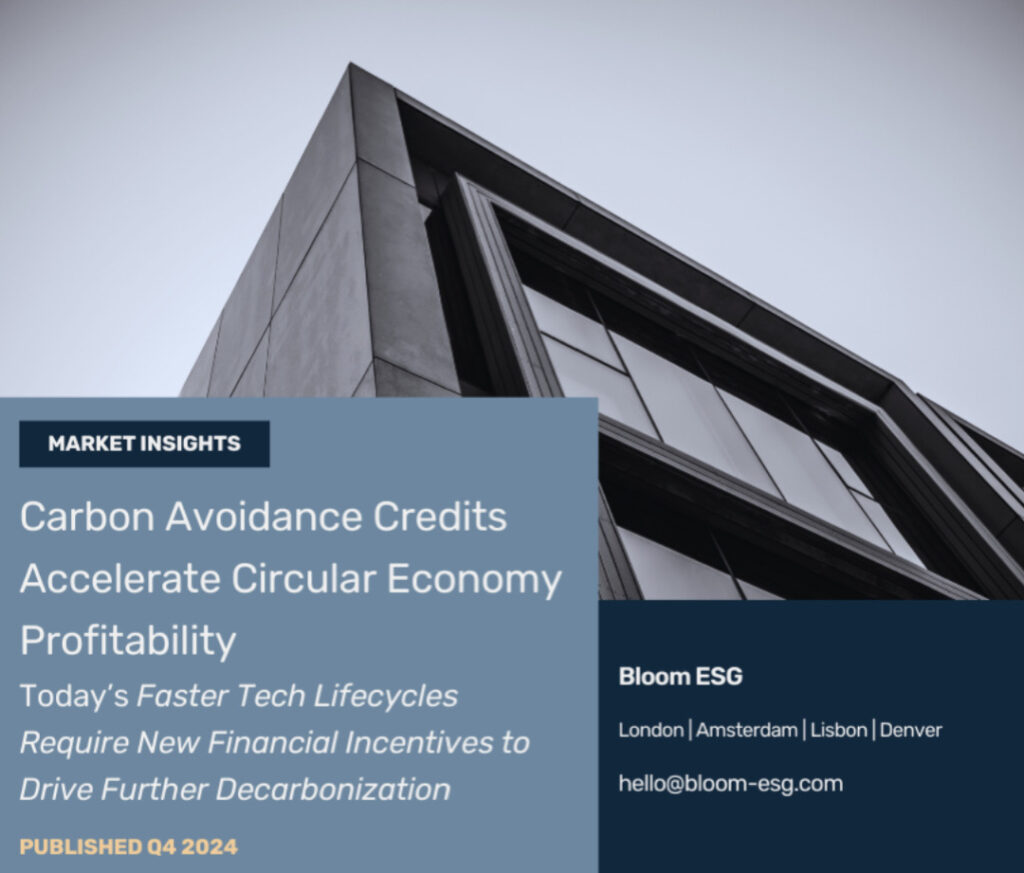Inset Certification
Supply Chain Decarbonisation
Create new revenue with avoided emissions certificate solution
Verified avoided emissions certificates. An industry first.
LAUNCHING in Q2 2025, Bloom will offer select e-waste processors the opportunity to generate ISO-verified avoided emissions certificates, a new type of environmental attribute certificate. Once issued, certificates can be traded and retired with corporate clients. Transferring the environmental benefits from re-use and recycling activities actively supports corporates to reduce their own value chain emissions. Commonly referred to as carbon inset certificates, this new commodity will create an innovative decarbonisation opportunity for corporates with large technology footprints, while offering e-waste processors an entirely new revenue stream and top line growth opportunities.
Learn more about carbon inset opportunity from e-waste. Get our white paper here.
Why corporates purchase inset certificates
A typical business with a net-zero target has committed to reduce Scope 3 greenhouse gas emissions by 30%. Today, the main way companies reduce their value chain emissions is:
● Accelerate Decarbonisation: direct engagement will suppliers to encourage them to reduce their own operational emissions has many benefits for both businesses. However, this is a multi-year process and with all suppliers serving multiple clients, is not always easy.
● Lower Risk: companies that purchase carbon credits (offsetting) generate an immediate impact and reduce the need for near-term emission reductions by suppliers. However, carbon offset projects are not directly linked to the business or their value chain. They are not without credibility, delivery, price and reputational risk. Companies that purchase inset certificates from directly within their value chain.
● Resilience: To improve supply chain resilience corporations are now exploring the direct reduction in Scope 3 emissions via carbon insetting to meet net zero goals and build stronger supply networks.
Put simply, the goal of carbon insetting is to directly reduce emissions from within the value chain. This benefits the large corporate’s Scope 3 emissions target while also improving the operational performance of participating supply partners.
Approach: designed for the e-waste industry
● Determine the feasibility and commercial potential of the project
● Manage the entire documentation, auditor selection and verification process
● Issue certificates onto our secure, dedicated inset registry
● Asset management of issued certificates on your behalf, including the transfer and retirement of certificates
● For existing clients: integrates into the e-waste avoided emissions platform
● Insets certificates are tradable: enabling them to pass from one company to another as they change supplier
● The trading of insets creates a new revenue stream that further improves the economics of carbon reduction investments.
Benefits
Calculated
● ISO approved methodology
● Sector specific impact: designed for re-use and recycling integrated software solution for tracking impact down to the customer order
Verified
● Operations data is independently verified to determine impact
● Verified certificates are issued on Bloom’s dedicated registry
● Verified emission reduction claims are fungible. Retire certificates on behalf of customers
Valued
● Engage your most valuable customers
● Generate high value revenue stream
● Reduces corporate need for carbon offsets
● Front foot sustainability leadership
“By working with Bloom for two years, our customers have leveraged avoided emissions data innovation to achieve their sustainability goals”
Pricing
Our pricing model is designed to be highly affordable and scalable with your business.
Get in touch to learn more.
Frequently asked questions
Learn more about Bloom works with companies here.
Contact us
to get started.
Read our thought leadership white papers:
Carbon Inset White Paper – September 2024
E-Waste White Paper – July 2024
Bloom ESG discuss how monetizing e-waste can enhance your bottom line while promoting sustainability. Explore…



